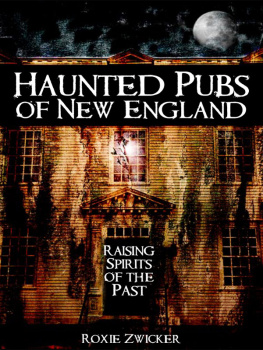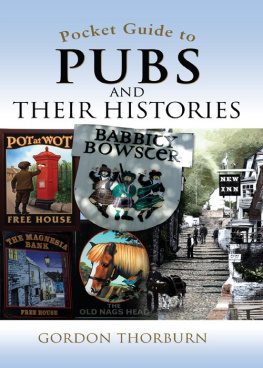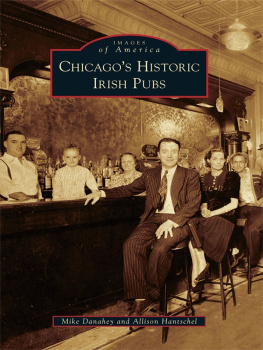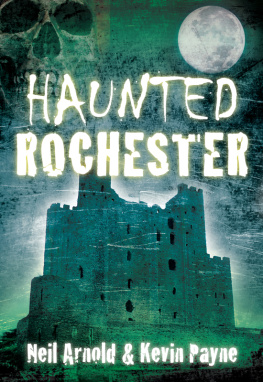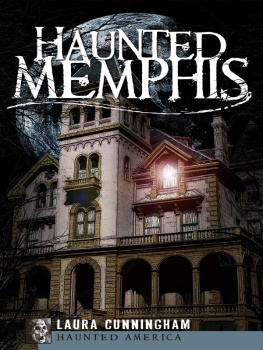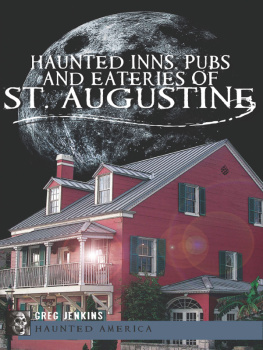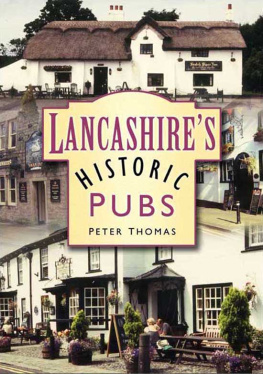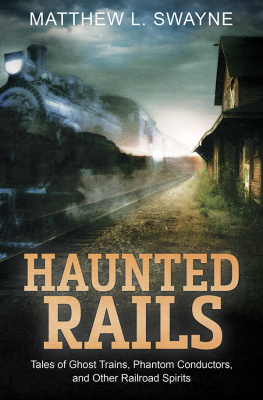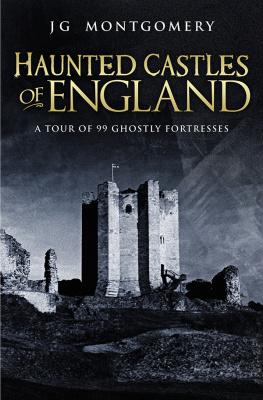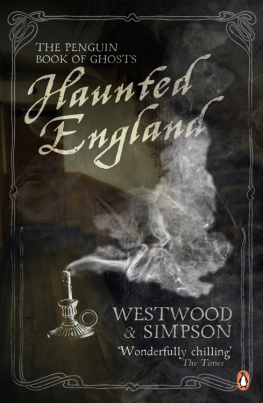

Published by Haunted America
A Division of The History Press
Charleston, SC 29403
www.historypress.net
Copyright 2007 by Roxie J. Zwicker
All rights reserved
Cover design: Marshall Hudson
All images courtesy of the author unless otherwise noted.
First published 2007
Second printing 2009
Third printing 2011
Fourth printing 2013
e-book edition 2013
Manufactured in the United States
ISBN 978.1.62584.411.8
Library of Congress Cataloging-in-Publication Data
Zwicker, Roxie J.
Haunted pubs of New England : raising spirits of the past / Roxie Zwicker.
p. cm.
Includes bibliographical references.
print edition ISBN 978-1-59629-281-9 (alk. paper)
1. Bars (Drinking establishments)--New England. I. Title.
BF1472.U6Z96 2007
133.122--dc22
2007026557
Notice: The information in this book is true and complete to the best of our knowledge. It is offered without guarantee on the part of the author or The History Press. The author and The History Press disclaim all liability in connection with the use of this book.
All rights reserved. No part of this book may be reproduced or transmitted in any form whatsoever without prior written permission from the publisher except in the case of brief quotations embodied in critical articles and reviews.
To my husband, Ken, thank you for sharing these experiences with me and for just being you.
To my daughter, Miss Autumn Rose, thank you for your patience, hugs, smiles and love.
I love you both.
CONTENTS
ACKNOWLEDGEMENTS
Special thanks to Dee Ann Hassen and Christopher Bashaw. Thanks for being our road trip copilots and companions on this journey. And to my number one fan, Jen Murphy-Aubin, thanks for always being there.
PREFACE
You are about to take a journey into the fascinating history and legacy of New Englands historic taverns and pubs. To understand the significance and role of these taverns and pubs, I thought it was important for you to learn a little about each community and its residents, so I have provided brief background on the history of each city and town. Each location is truly unique, and every tavern or pub leaves an impression on visitors and locals alike.
Visiting these locations has made for many memorable road trips throughout New England. No matter the season, the scenery was always beautiful, in seaport towns or quaint little villages. No matter the number of miles driven or hours spent driving, it was a real treat to arrive with camera and notebook in hand, knowing I was about to document intriguing history. Some places I visited for the very first time while others were regular haunts of mine, places where I dropped by as frequently as the ghosts did. It was wonderful to see how the communities evolved over the years and to see how the taverns have been part of that evolution. From affluent communities to working-class towns, there were some taverns still operating after countless years and others that have been transformed into lovely inns or private homes. A few taverns have seen dark days where lives were lost or locations were neglected and nearly forgotten for a period of time.
There have been varying attitudes about the legacies of the taverns covered in this book. Some people Ive met have been happy to share their stories and encountersmany for the first timewhile others have been less than forthcoming about their haunted histories. However, I feel that it doesnt matter if youre being served your dinner on a white linen tablecloth or a well-worn wooden table. There is no denying the fascinating history that has been established at each place over the years. Certainly I dont expect everyone to believe in paranormal activity or the existence of ghosts, but each of these locations has a background that lends itself to the telling of haunted tales.
I have tried to include food and drink recommendations whenever possible, because I know that picking up a menu at a place youve never tried can sometimes be a little bit daunting, especially when there are a large number of selections available. Signature dishes and drinks have been sampled to provide you with a few ideas. Local points of interest have been carefully selected for inclusion in some chapters.
My hope for you, reader, is that you will let this book be your guide through the mysteries of each of these taverns. Whether you decide to jump in your car and use this book as your traveling itinerary or whether you let the words and images in this book transport your mind, be prepared for your journey. Ive written this book to show the true characterand charactersof New Englands historic pubs and taverns, their ghosts and their captivating histories. You will soon see that some stories are deeply emotional and others are lighthearted and playful, but all are memorable and need to be told.
Find a comfortable chair, a frosty beverage and an illuminating light and the stories will work their charms. By reading these stories you are taking a role in keeping the history and the legends of New Englands remarkable taverns alive, and these taverns have spirited tales to share with you. Enjoy!
INTRODUCTION
Taverns in early New England were part of everyday life for the growing cities and towns. They served not only as a place to regulate the sale of alcohol to the community, but also as meetinghouses and country stores. Some accounts state that taverns were just as important to the community as they were to travelers. Taverns were also called public houses and ordinaries. In 1644, the Colonial Records of Connecticut ordered one sufficient inhabitant in each town to keep an ordinary. In 1656, the General Court of Massachusetts made towns liable to a fine for not sustaining an ordinary.
The taverns offered the opportunity to hear news from other communities, as the latest newspapers and notices were posted in the taverns. In addition, stage drivers often brought news and stories from some of the larger cities in the growing nation.
Many taverns had ballrooms or dance halls for socializing, while others cleared chairs away for music and merriment. Music was very important in taverns. In some New England taverns you would find a fiddlers throne, a raised platform where the performer could be seen by the audience. If a professional musician was not available, visitors performed their own music and stories for their amusement.
Meals at taverns were family affairs. Entire families were responsible for the operation and maintenance of these busy places. The tavern keeper and his family typically lived on site and all members of the family were assigned tasks that were vital in keeping the tavern operational. The tavern keepers wife was typically the cook and had the overall responsibility for food preparation and housekeeping. Most taverns also manufactured their own varieties of ale. If children were old enough, sons managed the stable and cared for the horses while daughters waited on tables and made the beds. Otherwise, tavern keepers had to find help and bring workers to live in the household.
Grog was a common and cheap eighteenth-century drink served at some taverns. It was made of rum and water and was invented by a ships captain to water down sailors daily liquor ration in hopes of ending drunken brawls. Grog has actually translated to a common saying today. One who consumes too many spirits may appear groggy, or mildly intoxicated. Also, a rule of thumb is a way to accomplish a task based on experience, rather than by theory or careful calculation. A Colonial brewer (without a thermometer) would dip his thumb into the brew to determine when the liquid was the right temperature for serving.
Next page
